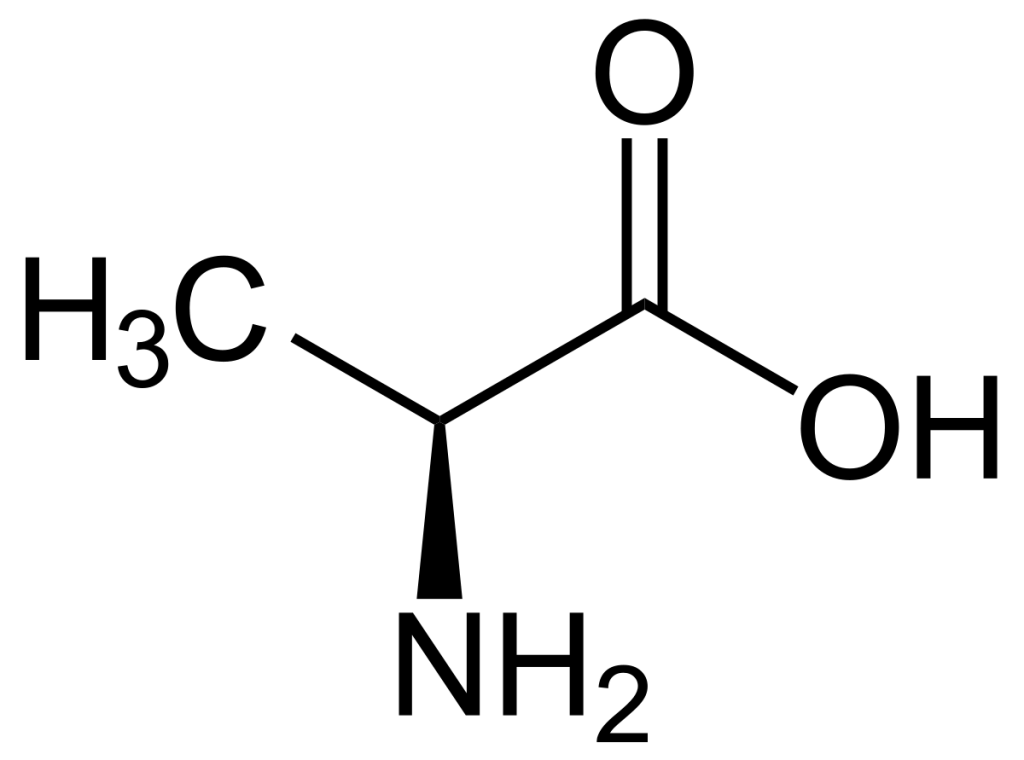What is Alanine? Benefits, Dietary Sources, Potential Side Effects

Have you ever heard of alanine? Well, Alanine is an amino acid that plays a pretty important role in our bodies, from helping to build protein to supplying energy to our muscles during exercise.
But you might be wondering, what exactly is alanine? And what are the benefits of getting enough of it in our diets?
Well, I’ll break it down for you. Not only will I tell you what alanine is and where you can find it in your food, but I’ll also touch on any potential side effects to keep an eye out for.
So, let’s dive in and get the lowdown on this essential amino acid.
What is Alanine?
Alanine, it’s kind of a big deal, you know? It’s one of the 20 amino acids that make up the proteins in our bodies.
But, let me break it down for you – amino acids are like the legos of proteins. Our bodies use these little legos to build all sorts of important proteins, from enzymes that help us digest our food to hormones that keep us ticking.

And alanine is one of those legos. It’s a non-essential amino acid, which means our bodies can make it on its own, but it still plays a pretty important role. It helps to give energy to our muscles during exercise, it helps in the metabolism of glucose and it can also help to build up the immune system.
So, in short, alanine is a pretty important player in our bodies.
Alanine Benefits
What are the benefits of Alanine?
Alanine plays an important role in providing energy to our muscles during exercise, helping in the metabolism of glucose, and building up the immune system. Let me break it down for you in a simple way.
Supplies energy to our muscles during intense workouts
When it comes to exercise, alanine helps to supply energy to our muscles during intense workouts.
Our muscles use up stored glucose for energy, but when that runs out, our bodies turn to stored glycogen which is a bunch of glucose molecules stuck together.
Alanine helps to convert the stored glycogen into glucose, which means that our muscles can keep working even when the stored glucose runs out.

Helps regulate blood sugar levels
In terms of glucose metabolism, alanine is involved in the glucose-alanine cycle, which helps to regulate blood sugar levels.
During exercise, our muscles take up glucose and convert it into alanine. The alanine then travels to the liver, where it’s converted back into glucose and released into the bloodstream to be used by other cells in the body.
This helps to keep our blood sugar levels stable, which is especially important for people with diabetes.
Helps build up the immune system
Another benefit of alanine is that it helps to build up the immune system. Alanine is important for the production of antibodies, which are proteins that help to fight off infections and diseases.
It also helps to produce white blood cells which are the cells that help to fight off infections and diseases.
Alanine Food Sources
Alanine is an amino acid that’s found in a variety of foods. Here are some of the best sources of alanine you can find:
Keep in mind that not all of these foods are equal in terms of alanine content, but they are some of the best sources you can find.

Potential Side Effects
Alanine, being an amino acid is generally considered safe for most people when taken in moderate amounts. However, consuming high amounts of alanine can cause some side effects. Here are a few things to keep in mind when it comes to the potential side effects of alanine:
Difference between Alanine and Beta-alanine?
Alanine and Beta-Alanine, they might sound similar but these two amino acids are actually quite different.
First, let’s start with Alanine. As I mentioned earlier, it’s one of the 20 amino acids that make up the proteins in our bodies, and it plays a crucial role in providing energy to our muscles during exercise, helping in the metabolism of glucose, and building up the immune system.
It’s found in a variety of food sources like meats, dairy products, and eggs, and it’s considered safe for most people to consume.
Now, let’s talk about Beta-Alanine. It’s a non-essential amino acid that our bodies can make on their own, but it’s also found in food sources like meats, dairy products, and eggs. But, the main difference between Alanine and Beta-Alanine is that Beta-Alanine is used by our bodies to make a compound called carnosine.

Carnosine is found in our muscles, and it helps to buffer the acid that builds up during intense exercise, which means that it can help to improve exercise performance and delay fatigue.
So, while Alanine and Beta-Alanine are both amino acids and they’re both found in similar food sources, they serve different purposes in our bodies. Alanine is involved in energy metabolism and immune function, while Beta-Alanine is used to make carnosine, which can help to improve exercise performance.
Bottom Line
Overall, alanine is an important amino acid that can be found in high-protein foods, including beef, eggs, and poultry.
It has a range of potential health benefits including promoting muscle strength and health, aiding with liver health and facilitating the manufacturing of important brain chemicals.
While considered generally safe, alanine can cause some side effects such as fatigue, increased sweating and low-grade fever.
